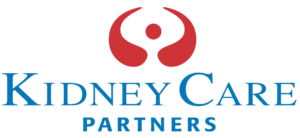More Medicare Star Ratings Coming Soon—Unless Providers Can Put the Brakes On
August 30, 2014
Published by Modern Healthcare
Sabriya Rice
August 30, 2014
Hospital groups and dialysis and home care providers are warning that a five-star rating system the CMS plans to apply to them as early as this fall is more likely to confuse consumers than help them meaningfully compare providers’ quality and safety.
The star system, already used by the federal agency to rate nursing homes and physician groups, has also come under fire in recent news reports for lacking rigor.
Advocates for patients and for large employers that pay for healthcare services argue that the government should not slow the rollout. They acknowledge that performance ratings are an imperfect science, but counter that more transparency and better tools are needed to help consumers make informed choices.
Dr. Patrick Conway, deputy administrator for innovation and quality for the CMS, said in a June blog post that ratings empower consumers and encourage providers to strive for higher levels of quality. The CMS intends to add the ratings to its comparison website for dialysis facilities in October, although some industry groups expect the ratings to be delayed.
The CMS has signaled vaguely in calls with providers (PDF) that the ratings would be added to the home health and hospital websites in December and January. Hospitals have not been told exactly when the rating system will arrive for them, according to the American Hospital Association.
The AHA, Kidney Care Partners and the Medicare Payment Advisory Commission (MedPAC) have argued that an extended timeline and comment period is needed to address key concerns over methodology.
A CMS spokesman declined to comment on the timeline and said only that the agency has not made any announcements regarding a delay or providing a comment period. The rating system’s methodology calls for crunching a score from measures already reported on the CMS websites, and then assigning stars based on how providers rank overall.
Dialysis providers have had an opportunity to preview their ratings this summer, and they’re not happy.
The rating system compares apples and oranges, said a spokesman for Kidney Care Partners, a coalition of dialysis companies (including DaVita HealthCare Partners and Fresenius Medical Care), pharmaceutical companies, clinicians and patient advocates. The rating methodology would push a third of the good performers into poor performing categories, the spokesman said. “Patients will have no idea what they are looking at.”
In an Aug. 15 letter sent to CMS administrator Marilyn Tavenner, MedPac chairman Glenn Hackbarth said the 5-star rating program conflicts with other end-stage renal disease quality improvement programs. “The differences in the methods and measures might result in a facility scoring high under one program and low under the other program,” he wrote.
Ratings are becoming increasingly important as healthcare providers can face financial penalties or lose accreditation for doing poorly on specified measures of quality and safety. Government agencies, news organizations, healthcare accreditation groups and not-for-profits have all started offering ratings over the past few years.
The emergence of these reviews has put pressure on hospital leaders to do what’s necessary to improve their scores. As discussed in a recent Modern Healthcare story, some have questioned whether any of the ratings accurately portray the performance of healthcare facilities. The New York Times recently reported that many nursing homes with high star ratings from the CMS also had poor customer reviews and had been penalized by state health officials for substandard care.
The Leapfrog Group, a not-for-profit organization representing large employers, applauded the CMS for efforts to expand the star-rating system. It’s long past time that consumers had information to compare the services, said Leah Binder, the group’s president and CEO. “Provider worries about the perfection of CMS’ plan should not impede progress toward full transparency,” she said. In a program that some hospitals have persistently criticized, the Leapfrog Group assigns letter grades for its Hospital Safety Score based on a combination of data collected from federal sources and its own surveys.
Leapfrog’s sentiment was shared by Consumer Reports’ medical director, Dr. John Santa. No organization is going to do well on every rating system, but the profusion of ratings will eventually drive a more coherent picture of the true quality and safety of an organization, he said in an e-mail. “You almost always have a period of confusion before you really are certain you have knowledge,” he said. “We need to treat consumers like adults and let them participate in the confusion.”
Nancy Foster, the AHA’s vice president for quality and patient safety policy, said incomplete or unreliable information, however, might be misguiding to patients. “(The methodology) doesn’t have to be perfect, but it has to be reasonably reliable,” Foster said. “If you’re going to portray overall performance with a star system, you want to make sure your methodology gives a fair assessment.”
See the original article here.
